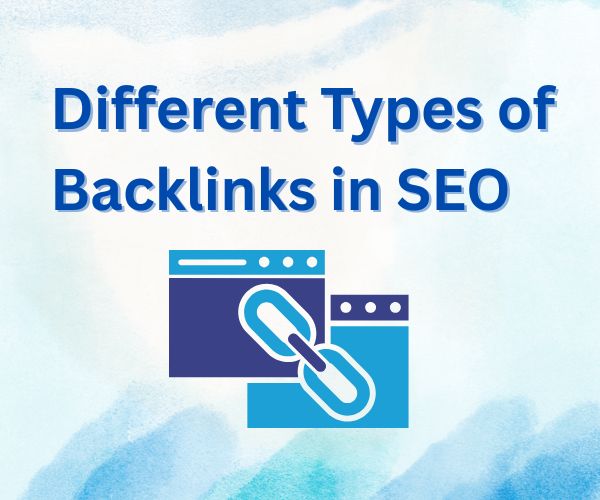Backlinks are one of the most important ranking factors in SEO. But not all backlinks are created equal – different types serve different purposes and come with varying SEO benefits (and risks).
Understanding the wide range of backlink types can help you develop a safer, smarter, and more effective link-building strategy.
This article breaks down 17 different types of backlinks, explains how each works, shows examples, and helps you understand when and how to use them.
1. Do-Follow Backlinks
What It Is:
These are the most valuable type of backlinks. They pass “link juice” (SEO authority) from one website to another.
SEO Value:
✔️ High
✔️ Helps improve rankings directly
Example:
<a href=”https://yourwebsite.com”>Visit My Blog</a>
When to Use:
- Link from trusted blogs or authority sites
- High-quality guest posts
- Resource recommendations
2. No-Follow Backlinks
What It Is:
These links include the rel=”nofollow” attribute. They don’t pass link juice, but still hold value for brand exposure and traffic.
Example:
<a href=”https://yourwebsite.com” rel=”nofollow”>Click Here</a>
When to Use:
- Blog comments
- Press releases
- Affiliate/sponsored content
3. Natural Editorial Backlinks
What It Is:
These are earned links—given naturally by other websites without asking.
SEO Value:
✔️ Very High
Google loves natural links because they signal trust.
Example:
A tech blog references your product in their review without you asking for it.
4. Guest Post Backlinks
What It Is:
Links you get by writing content for another website.
Benefits:
- Boosts authority
- Drives referral traffic
- Can include contextual, do-follow links
Example:
Guest blogging for cleaning with a link back to your homepage in the bio or body.
5. Profile Backlinks
What It Is:
Created by placing your website URL in profiles on forums, social networks, or directories.
Example Platforms:
Caution:
Avoid spammy directories. Stick to relevant, high DA platforms.
Check out Top High DA Profile Creation Websites (With Examples)
6. Forum Backlinks
What It Is:
Links added to forum discussions, Q&A platforms, or signature sections.
Example:
Posting useful advice on Quora with a contextual link to your blog.
Tips:
- Contribute value
- Don’t spam
- Follow forum rules
7. Blog Comment Backlinks
What It Is:
Adding your URL in the comment section of blogs.
Mostly No-Follow, but still good for:
- Traffic
- Indexing
- Brand visibility
Example:
“Great post! I wrote something similar on [YourBlog]. Check it out.”
8. Social Bookmarking Backlinks
What It Is:
Submitting your content on platforms like:
- Reddit
- Digg
- Mix
- Flipboard
Value:
Primarily for indexing and traffic, not authority.
9. Web 2.0 Backlinks
What It Is:
Creating and linking from content on free publishing platforms.
Examples:
- Medium.com
- WordPress.com
- Tumblr.com
Pro Tip:
Use unique, high-quality content. Don’t copy-paste.
10. Directory Submission Backlinks
What It Is:
Submitting your site to directories (general, local, or niche).
Good Directories:
- Yelp
- Yellow Pages
- Moz Local
Avoid:
- Spammy, outdated directories
11. Press Release Backlinks
What It Is:
Links gained from distributing press releases via media syndication.
Platforms:
- PRWeb
- BusinessWire
- EIN Presswire
Use Cases:
- Product launches
- Company announcements
12. Sponsored or Paid Backlinks
What It Is:
You pay for a backlink placement. These must be labeled with rel=”sponsored”.
Google Penalty Risk:
⚠️ Yes, if not tagged properly.
Best Practices:
- Only on high-quality sites
- Be transparent
13. PBN (Private Blog Network) Backlinks
What It Is:
Links from a network of sites owned by the same person, often used to manipulate rankings.
Risk Level:
❌ High (against Google’s Webmaster Guidelines)
Recommendation:
Avoid unless you’re aware of the risks.
14. Infographic Backlinks
What It Is:
Visual content that others embed and credit with a backlink.
How to Get:
- Create a valuable infographic
- Submit to infographic directories
- Outreach to blogs
15. .EDU and .GOV Backlinks
What It Is:
Links from educational or government websites.
Value:
✔️ Very High (Trusted sources)
How to Get:
- Offer scholarships
- Write helpful content for student resources
- Partner with nonprofits
16. Image Backlinks
What It Is:
When other websites use your images and link to the original source.
How to Find Opportunities:
Use Google Reverse Image Search to request links where your images are used without credit.
17. Testimonial Backlinks
What It Is:
You write a testimonial for a product or service, and they feature it on their site with a backlink to yours.
Benefits:
- Easy to get
- Appears natural
- Trusted by companies
How to Build a Balanced Backlink Profile
- Mix do-follow and no-follow links
- Prioritize editorial, guest post, and authority links
- Avoid spammy backlinks
- Monitor using tools like Ahrefs, SEMrush, Moz
❌ Backlink Types to Avoid
- Links from link farms
- Auto-generated backlinks
- Irrelevant or duplicate Web 2.0 blogs
- Footer and sidebar spam links
❓ FAQs
Q1. What are the best types of backlinks for SEO?
Answer: Natural editorial, high-authority do-follow, and guest post backlinks are among the best.
Q2. Are no-follow links useful?
Yes. They help diversify your link profile and bring traffic, even though they don’t pass link juice.
Q3. How many backlinks do I need to rank?
There’s no magic number. It depends on your competition, keyword difficulty, and link quality.
Q4. Can I use only one type of backlink?
No. Relying on one type, like profile links or forum links, can look unnatural and hurt your SEO.
Q5. How can I check my backlinks?
Use tools like:
- Google Search Console
- Ahrefs
- SEMrush
- Moz
Conclusion
Understanding the different types of backlinks in SEO is essential for building a strong, safe, and effective link profile. From natural editorial links to guest posting and Web 2.0 platforms, each backlink type plays a unique role. Focus on quality over quantity, stay within Google’s guidelines, and diversify your strategy to build long-term domain authority.


